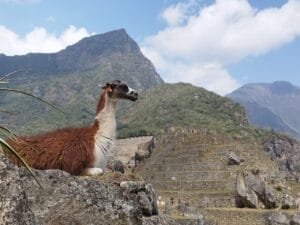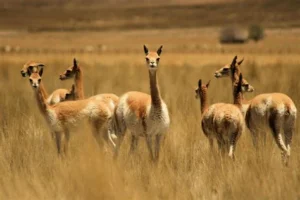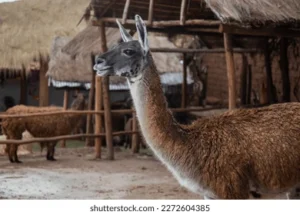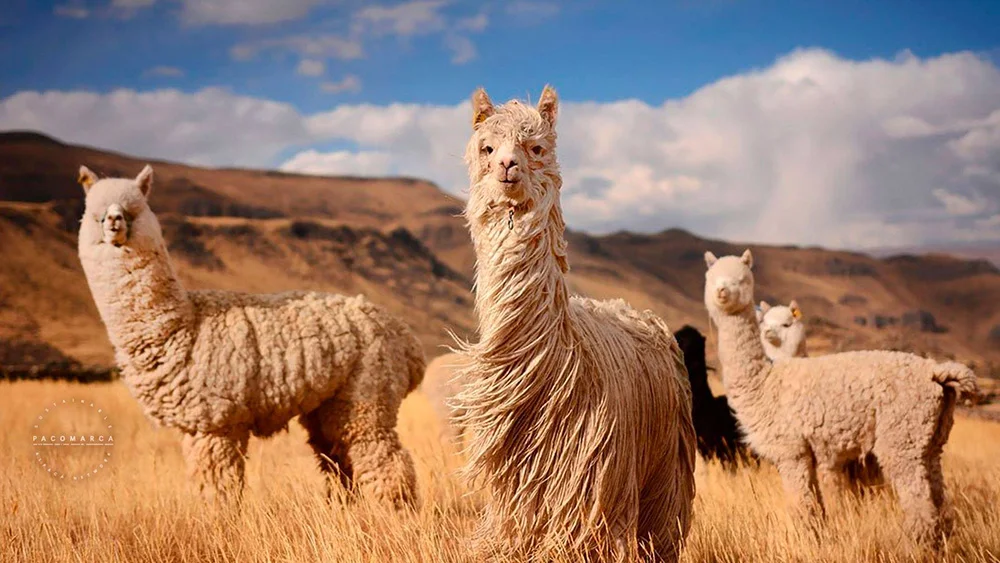Cusco, known for its ancient ruins and breathtaking landscapes, is also home to a group of remarkable animals that have been integral to Andean culture for centuries: the South American camelids. These include llamas, alpacas, vicunas, and guanacos, all of which have played vital roles in the region’s history and economy. Each of these camelids has unique characteristics that make them special, whether it’s their historical significance, valuable wool, or their importance in Andean tradition.
In this article, we’ll explore the differences between these fascinating animals and their place in the cultural and natural landscape of Cusco.
1. Llamas: The Andean Workhorse

Llamas (Lama glama) are perhaps the most well-known camelids, easily recognized by their long necks and large bodies. These animals have been domesticated for over 4,000 years, used primarily as pack animals by ancient Andean civilizations, including the Incas.
Characteristics:
While their wool is coarser compared to alpacas, it is still used for making ropes, blankets, and other textiles.
Llamas are the largest of the South American camelids, standing about 1.7 to 1.8 meters tall.
They are highly social and prefer to live in herds.
Llamas are valued for their strength, capable of carrying loads of up to 30 kilograms, making them essential for transporting goods across the steep Andean terrain.
Where to See Llamas in Cusco:
Visitors to Cusco will frequently encounter llamas at popular tourist sites such as Machu Picchu, Sacsayhuamán, and the Sacred Valley. Many local communities also raise llamas, and some tours include visits to llama farms where you can learn more about their significance in Andean culture.
2. Alpacas: The Fiber Producers

Alpacas (Vicugna pacos) are smaller than llamas and are primarily bred for their soft and luxurious wool, which is prized around the world. There are two main breeds of alpacas: the Huacaya, which has a fluffy, dense fleece, and the Suri, with its long, silky, and curly wool.
Characteristics:
- Alpacas are smaller than llamas, standing about 1.5 meters tall.
- They are known for their gentle nature and are easy to domesticate.
- Alpaca wool is incredibly soft and hypoallergenic, making it ideal for creating high-quality textiles such as scarves, sweaters, and blankets.
- Cusco is one of the leading regions in the production of alpaca wool, with many local artisans selling handmade alpaca products.
Where to See Alpacas in Cusco:
Alpacas can be found throughout the Cusco region, particularly in rural communities. The Centro de Textiles Tradicionales del Cusco (Cusco Textile Center) offers a unique opportunity to see alpacas and learn about traditional weaving techniques using alpaca wool.
3. Vicunas: The Royal Camelids
Vicunas (Vicugna vicugna) are wild camelids known for producing some of the finest and most expensive wool in the world. They were once nearly extinct due to overhunting, but thanks to conservation efforts, vicuna populations have recovered and are now protected.

Characteristics:
- Vicunas are the smallest camelids, standing about 0.9 meters tall at the shoulder.
- They have slender bodies, long necks, and are considered the ancestors of domesticated alpacas.
- Their wool is incredibly fine and soft, and historically, it was reserved for Inca royalty.
- Vicunas are wild animals and cannot be domesticated. Their wool is obtained during annual “chaccu” ceremonies, where the animals are herded, shorn, and released back into the wild.
Where to See Vicunas in Cusco:
Vicunas are often seen in the high-altitude plains of the Andes, particularly in protected areas such as the Pampa Galeras-Bárbara D’Achille National Reserve. However, they are less commonly encountered compared to llamas and alpacas due to their wild nature.
4. Guanacos: The Elusive Cousins
Guanacos (Lama guanicoe) are the least known of the South American camelids but are the wild ancestors of llamas. Like vicunas, they roam the Andean highlands and are not domesticated. Guanacos are more commonly found in the southern parts of South America, but small populations exist in Cusco’s higher, remote areas.

Characteristics:
- Guanacos are larger than vicunas but smaller than llamas, standing about 1.2 meters tall at the shoulder.
- They are known for their agility and ability to thrive in harsh environments.
- Guanaco wool is less fine than vicuna wool but still valued for its softness.
- Like vicunas, guanacos are wild and live in herds, typically in remote regions where human contact is minimal.
Where to See Guanacos in Cusco:
While guanacos are rarer in the Cusco region, they may occasionally be seen in the higher altitudes of the Andes. To increase your chances of spotting these elusive animals, it’s best to visit remote national parks and reserves in Peru.
Camelids in Andean Culture
Camelids have always played a crucial role in Andean culture, serving as pack animals, fiber producers, and even symbols of status. Their wool is still used in traditional Andean textiles, while llamas and alpacas are featured in many local festivals and celebrations.
In Cusco, camelids are part of the everyday landscape, from the colorful textiles in local markets to the herds grazing in the Sacred Valley. For travelers, encountering these animals offers a deeper connection to the region’s rich history and indigenous traditions.
Highlights:
| Before setting up camp, ensure you: | ||
|---|---|---|
| Llamas: The largest of the camelids, known as pack animals in Andean culture, often seen at iconic sites like Machu Picchu and the Sacred Valley. | ||
| Alpacas: Famous for their soft, luxurious wool, prized by artisans for high-quality textiles. Visitors can learn about traditional weaving techniques in Cusco. | ||
| Vicunas: Wild ancestors of alpacas, producing the finest wool in the world, historically reserved for Inca royalty. Found in remote Andean plains. | ||
| Guanacos: The wild relatives of llamas, agile and thriving in high-altitude environments. Rarely spotted but can be seen in Cusco’s remote areas. |
Conclusion
Cusco’s camelids—llamas, alpacas, vicunas, and guanacos—are not only a vital part of Andean life but also a testament to the region’s biodiversity and cultural heritage. Whether you’re trekking through the Andes or visiting a traditional weaving center, these animals provide a unique glimpse into the lives of the people who have depended on them for centuries. As you explore the wonders of Cusco, be sure to take time to appreciate these remarkable creatures and their role in shaping the history of this extraordinary region.


